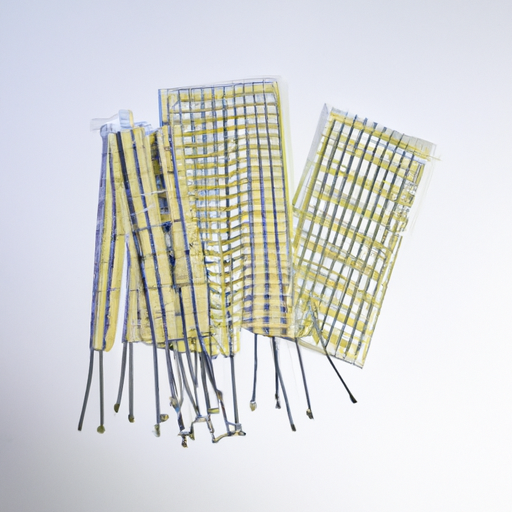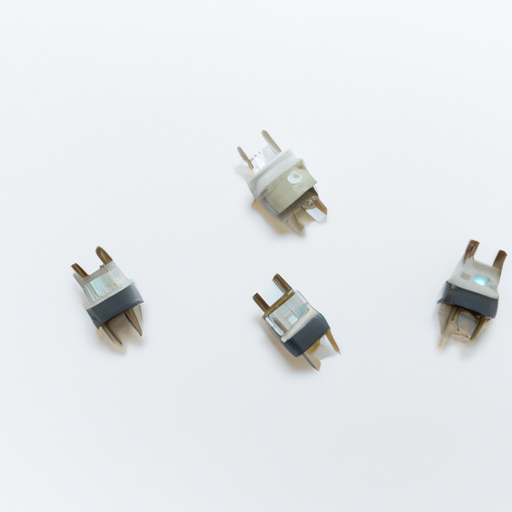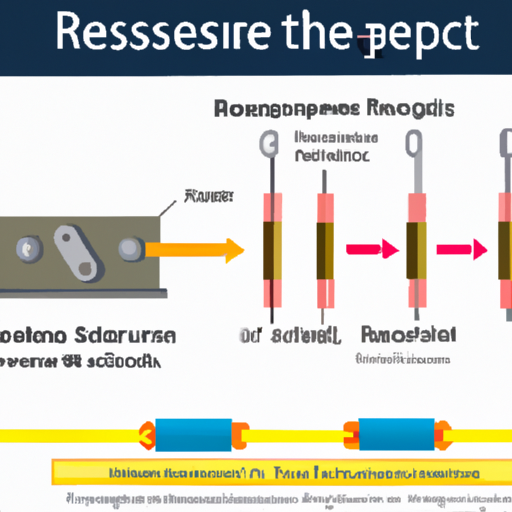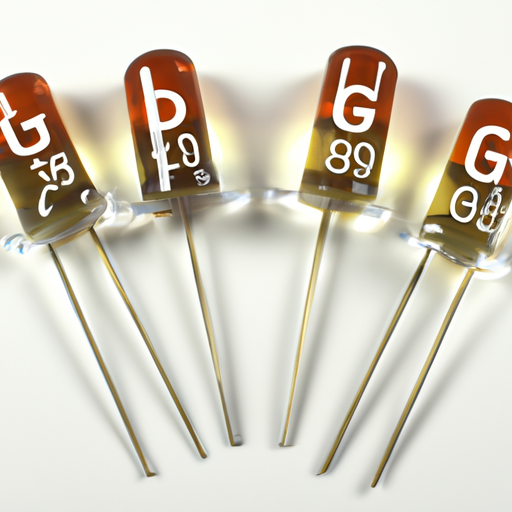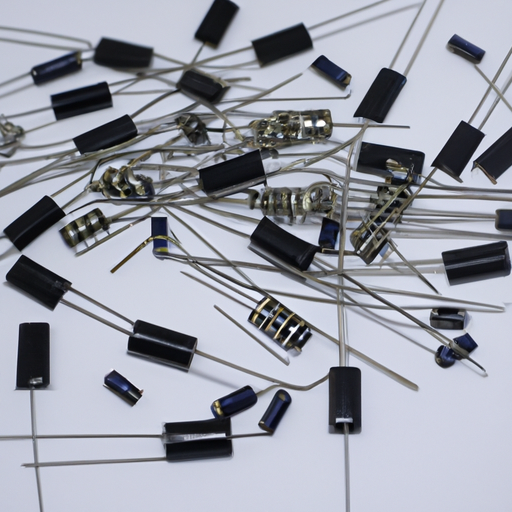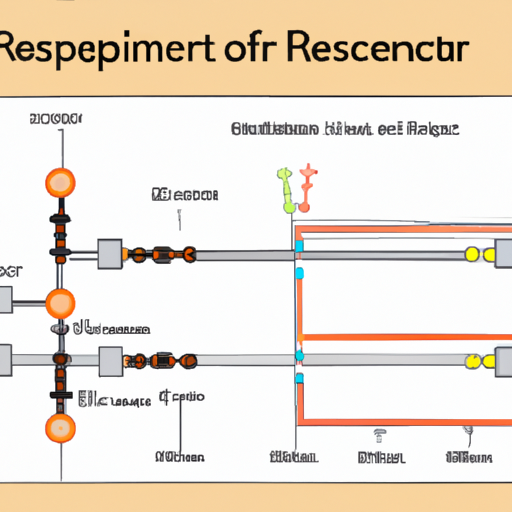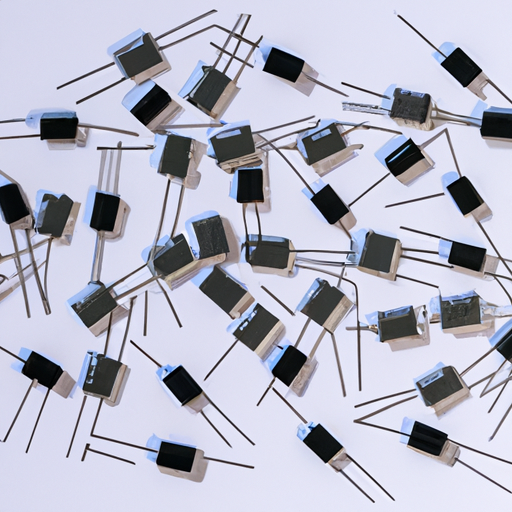What are the Latest Resistors and Resistor Manufacturing Processes?
I. Introduction
Resistors are fundamental components in electronic circuits, serving the essential function of limiting current flow and dividing voltages. They play a critical role in a wide array of applications, from simple household electronics to complex industrial machinery. As technology has evolved, so too has the design and manufacturing of resistors, leading to significant advancements in performance, size, and functionality. This blog post explores the latest developments in resistor technology and manufacturing processes, highlighting the innovations that are shaping the future of this vital electronic component.
II. Types of Resistors
Resistors come in various types, each designed for specific applications and performance requirements.
A. Fixed Resistors
1. **Carbon Composition Resistors**: These resistors are made from a mixture of carbon particles and a binding resin. While they are less common today due to their higher noise levels and lower precision, they are still used in applications where high energy pulses are present.
2. **Metal Film Resistors**: Known for their accuracy and stability, metal film resistors are made by depositing a thin layer of metal onto a ceramic substrate. They offer low noise and high precision, making them ideal for applications requiring tight tolerances.
3. **Wirewound Resistors**: These resistors are constructed by winding a metal wire around a ceramic or fiberglass core. They can handle high power levels and are often used in power applications, but they are bulkier than other types.
B. Variable Resistors
1. **Potentiometers**: These adjustable resistors allow users to vary resistance manually. They are commonly used in volume controls and other applications where user input is required.
2. **Rheostats**: Similar to potentiometers, rheostats are used to control current. They are typically used in applications requiring high power and are often found in lighting controls.
C. Specialty Resistors
1. **Thermistors**: These temperature-sensitive resistors change resistance with temperature variations. They are widely used in temperature sensing and control applications.
2. **Photoresistors**: Also known as light-dependent resistors (LDRs), these components change resistance based on light exposure. They are commonly used in light-sensing applications, such as automatic lighting systems.
3. **Varistors**: These voltage-dependent resistors protect circuits from voltage spikes. They are essential in surge protection devices and are used in various electronic applications.
III. Latest Developments in Resistor Technology
The resistor industry has seen remarkable advancements in materials, miniaturization, and performance features.
A. Advances in Materials
1. **Conductive Polymers**: These materials offer flexibility and lightweight properties, making them suitable for applications in wearable technology and flexible electronics.
2. **Nanomaterials**: The use of nanotechnology in resistor manufacturing has led to improved performance characteristics, such as enhanced conductivity and reduced size.
3. **Advanced Ceramics**: New ceramic materials provide better thermal stability and resistance to environmental factors, making them ideal for high-performance applications.
B. Miniaturization Trends
1. **Surface Mount Technology (SMT)**: SMT has revolutionized the way resistors are integrated into circuits. These components are smaller and can be placed directly onto the surface of printed circuit boards (PCBs), allowing for more compact designs.
2. **Chip Resistors**: These tiny resistors are designed for high-density applications and are often used in consumer electronics, where space is at a premium.
C. Enhanced Performance Features
1. **High Power Resistors**: Innovations in materials and design have led to the development of resistors that can handle higher power levels without overheating, making them suitable for demanding applications.
2. **Precision Resistors**: Advances in manufacturing techniques have resulted in resistors with tighter tolerances and better stability, essential for high-accuracy applications.
3. **Temperature Coefficient Improvements**: New materials and designs have improved the temperature coefficient of resistors, reducing the impact of temperature changes on resistance values.
IV. Resistor Manufacturing Processes
The manufacturing of resistors has evolved significantly, incorporating both traditional techniques and modern innovations.
A. Traditional Manufacturing Techniques
1. **Film Deposition**: This process involves depositing a thin film of resistive material onto a substrate. It is commonly used for metal film and carbon film resistors.
2. **Wirewound Techniques**: In this traditional method, a wire is wound around a core to create resistance. While effective, this method is less common for miniaturized applications.
B. Modern Manufacturing Innovations
1. **3D Printing in Resistor Production**: The advent of 3D printing technology has opened new avenues for resistor design and manufacturing. This method allows for rapid prototyping and the creation of complex geometries that were previously difficult to achieve.
2. **Automated Assembly Processes**: Automation has streamlined the production of resistors, increasing efficiency and reducing the likelihood of human error. Automated systems can handle high volumes of production while maintaining quality.
3. **Quality Control and Testing Innovations**: Advanced testing methods, including automated optical inspection and electrical testing, ensure that resistors meet stringent quality standards before they reach the market.
C. Environmental Considerations
1. **Sustainable Materials**: The industry is increasingly focusing on using sustainable materials in resistor production, reducing the environmental impact of manufacturing processes.
2. **Waste Reduction Techniques**: Manufacturers are implementing waste reduction strategies, such as recycling materials and optimizing production processes to minimize waste.
V. Applications of Modern Resistors
Modern resistors find applications across various industries, reflecting their versatility and importance.
A. Consumer Electronics
In consumer electronics, resistors are used in everything from smartphones to televisions, playing a crucial role in circuit design and functionality.
B. Automotive Industry
Resistors are essential in automotive applications, including power management systems, sensor circuits, and safety features, contributing to the overall performance and reliability of vehicles.
C. Industrial Automation
In industrial settings, resistors are used in control systems, robotics, and machinery, ensuring precise operation and safety.
D. Medical Devices
Resistors are critical in medical devices, where accuracy and reliability are paramount. They are used in diagnostic equipment, monitoring systems, and therapeutic devices.
E. Telecommunications
In telecommunications, resistors are integral to signal processing and transmission, ensuring clear and reliable communication.
VI. Future Trends in Resistor Technology
The future of resistor technology is poised for exciting developments, driven by the need for smarter and more efficient electronic components.
A. Smart Resistors and IoT Integration
As the Internet of Things (IoT) continues to expand, the demand for smart resistors that can communicate and adapt to changing conditions is on the rise. These resistors will play a vital role in creating interconnected devices that can monitor and respond to their environments.
B. Customizable Resistor Solutions
The trend towards customization is growing, with manufacturers offering tailored resistor solutions to meet specific application requirements. This flexibility will enhance performance and efficiency in various industries.
C. Research and Development Directions
Ongoing research in materials science and engineering will continue to drive innovations in resistor technology. Areas of focus include developing new materials, improving manufacturing processes, and enhancing performance characteristics.
VII. Conclusion
In summary, resistors remain a cornerstone of electronic technology, evolving alongside advancements in materials, manufacturing processes, and applications. The latest developments in resistor technology, including miniaturization, enhanced performance features, and sustainable practices, are shaping the future of this essential component. As we look ahead, the ongoing importance of resistors in technology is clear, and their role in driving innovation will only continue to grow.
VIII. References
A comprehensive list of academic journals, industry reports, manufacturer publications, and online resources can provide further insights into the latest trends and technologies in resistor manufacturing and applications.

